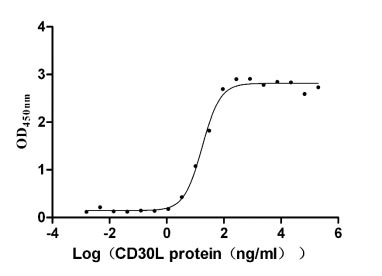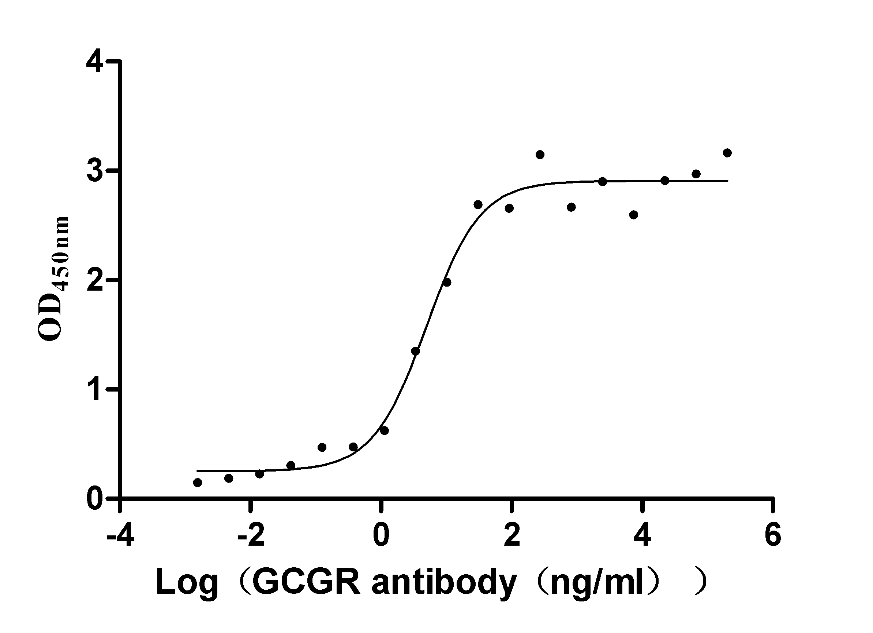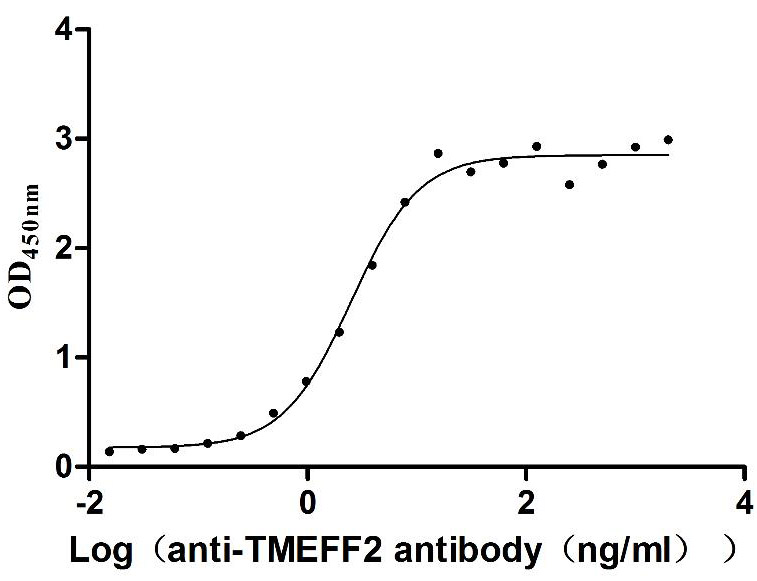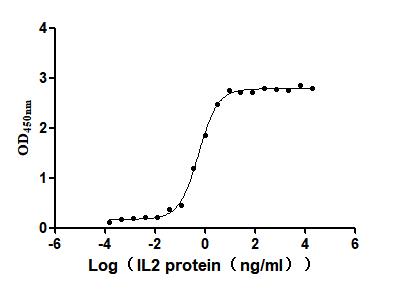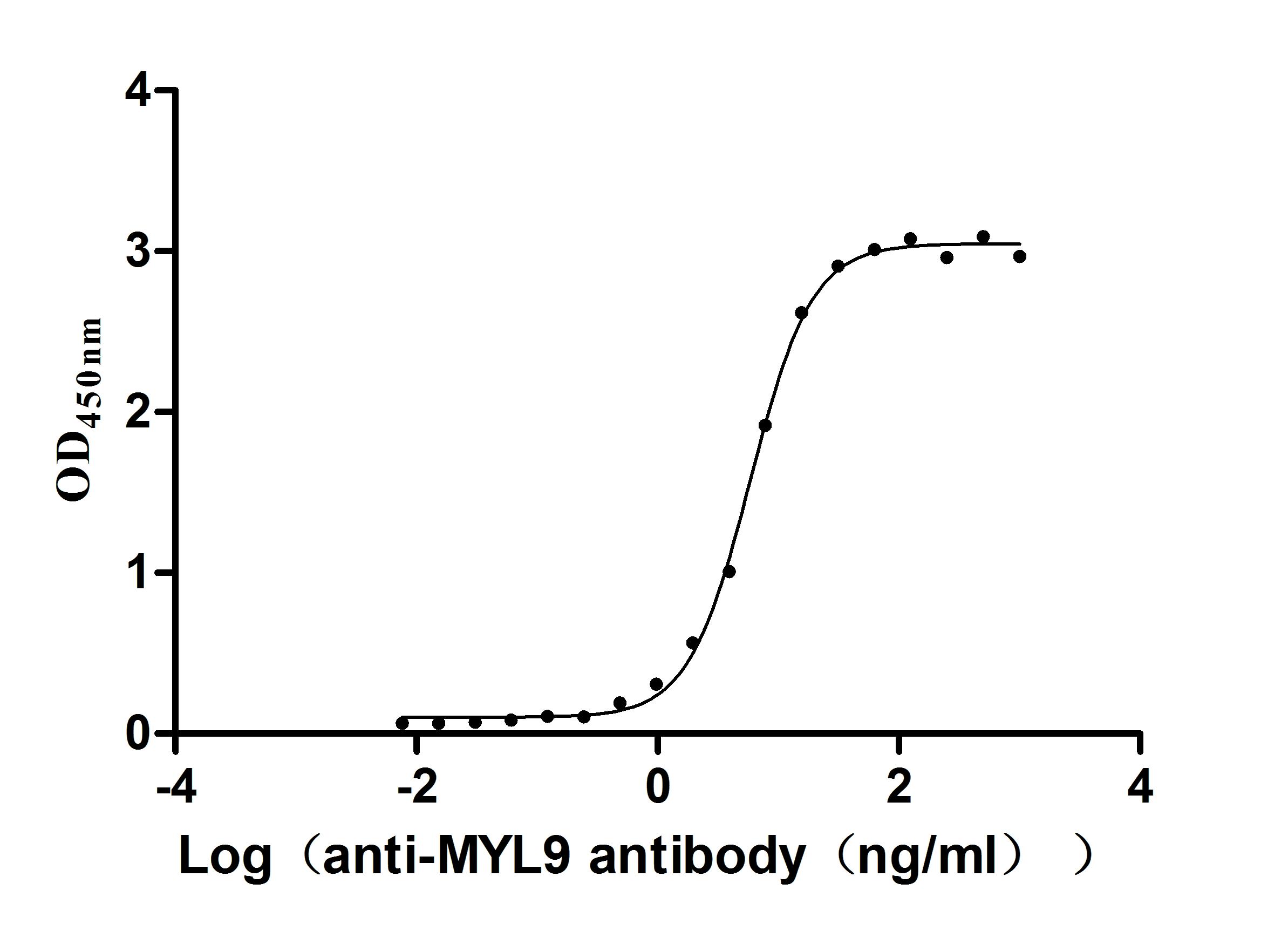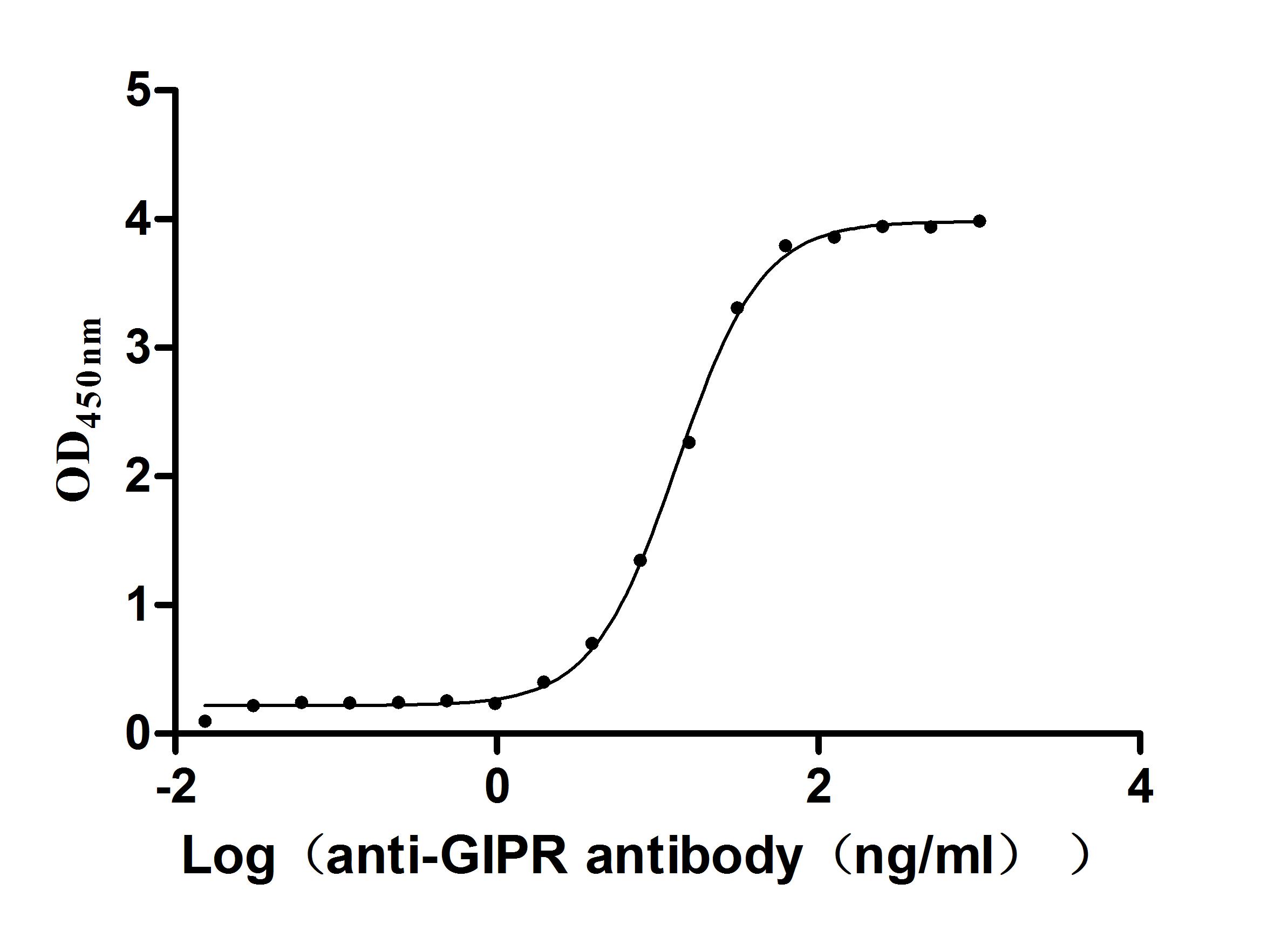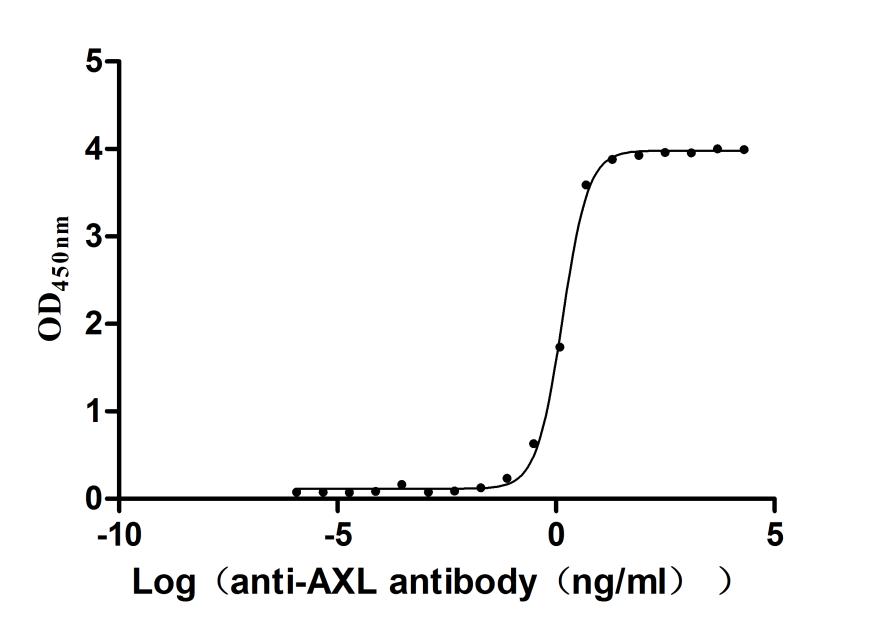Recombinant Rat Potassium voltage-gated channel subfamily A member 3 (Kcna3), partial
-
中文名稱:大鼠Kcna3重組蛋白
-
貨號:CSB-EP012008RA1-B
-
說明書:
-
規格:
-
來源:E.coli
-
共軛:Avi-tag Biotinylated
E. coli biotin ligase (BirA) is highly specific in covalently attaching biotin to the 15 amino acid AviTag peptide. This recombinant protein was biotinylated in vivo by AviTag-BirA technology, which method is BriA catalyzes amide linkage between the biotin and the specific lysine of the AviTag.
-
其他:
產品詳情
-
純度:>85% (SDS-PAGE)
-
基因名:
-
Uniprot No.:
-
別名:Kcna3; Potassium voltage-gated channel subfamily A member 3; RCK3; RGK5; Voltage-gated potassium channel subunit Kv1.3; Voltage-gated potassium channel subunit Kv3
-
種屬:Rattus norvegicus (Rat)
-
蛋白長度:Partial
-
蛋白標簽:Tag?type?will?be?determined?during?the?manufacturing?process.
The tag type will be determined during production process. If you have specified tag type, please tell us and we will develop the specified tag preferentially. -
產品提供形式:Lyophilized powder Warning: in_array() expects parameter 2 to be array, null given in /www/web/cusabio_cn/public_html/caches/caches_template/default/content/show_product_protein.php on line 662
Note: We will preferentially ship the format that we have in stock, however, if you have any special requirement for the format, please remark your requirement when placing the order, we will prepare according to your demand. -
復溶:We recommend that this vial be briefly centrifuged prior to opening to bring the contents to the bottom. Please reconstitute protein in deionized sterile water to a concentration of 0.1-1.0 mg/mL.We recommend to add 5-50% of glycerol (final concentration) and aliquot for long-term storage at -20℃/-80℃. Our default final concentration of glycerol is 50%. Customers could use it as reference.
-
儲存條件:Store at -20°C/-80°C upon receipt, aliquoting is necessary for mutiple use. Avoid repeated freeze-thaw cycles.
-
保質期:The shelf life is related to many factors, storage state, buffer ingredients, storage temperature and the stability of the protein itself.
Generally, the shelf life of liquid form is 6 months at -20°C/-80°C. The shelf life of lyophilized form is 12 months at -20°C/-80°C. -
貨期:Delivery time may differ from different purchasing way or location, please kindly consult your local distributors for specific delivery time.Note: All of our proteins are default shipped with normal blue ice packs, if you request to ship with dry ice, please communicate with us in advance and extra fees will be charged.
-
注意事項:Repeated freezing and thawing is not recommended. Store working aliquots at 4°C for up to one week.
-
Datasheet :Please contact us to get it.
相關產品
靶點詳情
-
功能:Mediates the voltage-dependent potassium ion permeability of excitable membranes. Assuming opened or closed conformations in response to the voltage difference across the membrane, the protein forms a potassium-selective channel through which potassium ions may pass in accordance with their electrochemical gradient.
-
基因功能參考文獻:
- The high stability and bioavailability, low normal-tissue uptake of [(64)Cu]Cu-NOTA-HsTX1[R14A], and accumulation in regions of up-regulated Kv channels both in vitro and in vivo demonstrate that HsTX1[R14A] represents a valuable lead for conditions treatable by blockade of the voltage-gated potassium channel Kv1.3. PMID: 28623364
- T-cell dependency on Kv1.3 or KCa3.1 might be irreversibly modulated by antigen exposure. PMID: 28248292
- PKC activation triggers down-regulation of Kv1.3 by inducing a clathrin-mediated endocytic event that targets the channel to lysosomal-degradative compartments. PMID: 28186199
- Kv1.3 may be a therapeutic target of interest for multiple sclerosis and add astrocytes to the list of cells whose activation would be suppressed by inhibiting Kv1.3 in inflammatory conditions PMID: 29574670
- Kv1.3 is involved in methamphetamine-mediated microglial damage PMID: 24533129
- Targeting the ion channel Kv1.3 with scorpion venom peptides engineered for potency, selectivity, and half-life PMID: 24939846
- Kv1.3 appears to be distributed to the cis-Golgi membrane of rat astrocytes in a similar way as a Golgi resident protein. PMID: 24924920
- Results suggest that voltage-gated KV1.3 potassium channe represent effective targets for the treatment of allergic asthma. PMID: 24644290
- Identification of the Kv1.3 C-terminal signal sequence required for anterograde trafficking and surface expression. PMID: 24144698
- A potent and selective peptide blocker of the Kv1.3 channel: prediction from free-energy simulations and experimental confirmation PMID: 24244345
- The expression of Kv1.3 protein was significantly elevated in lymphocytes from SHR rats compared with that of the normotensive Wistar rats. PMID: 20717640
- Selective inhibition of CCR7(-) effector memory T cell activation by a novel peptide targeting Kv1.3 channel in a rat experimental autoimmune encephalomyelitis model.( PMID: 22761436
- Two successive N-glycosylation consensus sites, N228NS and N229ST, are present on the S1-S2 linker of Kv1.3. Data suggest that Kv1.3 contains only one N-glycan and it is predominantly attached to N229 in the S1-S2 extracellular linker. PMID: 22613618
- Rat brain endothelial cells express Kv1.3, Kir2.1 and Kir2.2 K+ channels, all of which participate in setting membrane potential and could mediate K+ secretion into the brain interstitial fluid. PMID: 18026984
- This study supportes that Kv1.3 regulates the duration of the action potential in the presynaptic terminal of C fibers, limiting transmitter release to the postsynaptic cell. PMID: 21430270
- These findings underline the regulatory role of K(+) channels on the cell cycle and imply that K(+) channel modulators might be used therapeutically to activate endogenous NPCs.(Kv1.3 channel) PMID: 17029597
- Renal Kv1.3 channels participate in K(+) secretion and that apical membrane localization of Kv1.3 is enhanced in the intercalated cells by dietary K(+) loading. PMID: 20427469
- Kv1.3 potassium channels apparently contribute to cell-autonomous death of retinal ganglion cells through different components of the apoptotic machinery. PMID: 19696788
- KCNE4 (potassium voltage-gated channel subfamily E member 4), but not KCNE2, functions as an inhibitory Kv1.3 partner in leukocytes. PMID: 19773357
- Neurotrophin modulation of Kv1.3 channels through TrkB receptors is time and sensory experience dependent PMID: 12122142
- expression of the Kv1.3 subunit of the Kv1 family of voltage-gated potassium channels is predominant in rat prostate cancer cell lines PMID: 12838421
- KCNE4 beta-subunit has a drastic inhibitory effect on currents generated by Kv1.1 and Kv1.3 potassium channels PMID: 12944270
- Activated microglia killed postnatal hippocampal neurons through a process that requires Kv1.3 channel activity in microglia but not in neurons. PMID: 16079396
- T cells with other antigen specificities from these patients, or autoreactive T cells from healthy individuals and disease controls, express low levels of Kv1.3 and are predominantly naive or central-memory (T(CM)) cells PMID: 17088564
- implicate the traffic and localization of Kv1.3/Kv1.5 heteromers in the complex regulation of immune system cells PMID: 18218624
- Kv1.3 affects the function of postganglionic sympathetic neurons, which suggests that Kv1.3 influences sympathetic control of cardiovascular function PMID: 18614767
顯示更多
收起更多
-
亞細胞定位:Cell membrane; Multi-pass membrane protein.
-
蛋白家族:Potassium channel family, A (Shaker) (TC 1.A.1.2) subfamily, Kv1.3/KCNA3 sub-subfamily
-
數據庫鏈接:
Most popular with customers
-
Recombinant Human Tumor necrosis factor receptor superfamily member 8 (TNFRSF8), partial (Active)
Express system: Mammalian cell
Species: Homo sapiens (Human)
-
Recombinant Human Glucagon receptor (GCGR), partial (Active)
Express system: Mammalian cell
Species: Homo sapiens (Human)
-
Recombinant Human Tomoregulin-2 (TMEFF2), partial (Active)
Express system: Mammalian cell
Species: Homo sapiens (Human)
-
Recombinant Human Interleukin-2 (IL2) (Active)
Express system: Mammalian cell
Species: Homo sapiens (Human)
-
Recombinant Human Myosin regulatory light chain 12A (MYL12A) (Active)
Express system: E.coli
Species: Homo sapiens (Human)
-
Recombinant Macaca fascicularis Gastric inhibitory polypeptide receptor (GIPR), partial (Active)
Express system: yeast
Species: Macaca fascicularis (Crab-eating macaque) (Cynomolgus monkey)
-
Recombinant Human Tyrosine-protein kinase receptor UFO(AXL),partial (Active)
Express system: Mammalian cell
Species: Homo sapiens (Human)


